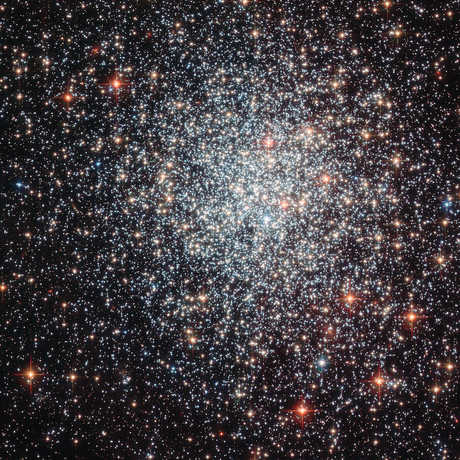
Earth is about 93 million miles away from the Sun. But you're more closely connected to the stars than you might think...
About This Video
Grade level: 6-12
Length: 2 minutes
Next Generation Science Standards: HS-ESS1.A, HS-PS1.C
Video Synopsis
You and all of the things around you are made up of atoms. Elements are specific kinds of atoms defined by their number of protons. All of the elements that make up our stuff, our bodies, and our environment came from outer space. But how are elements made in outer space, and how did they get here? What is going on?
This video was made in collaboration with Chicago Public Schools as part of their NGSS-aligned high school biology curriculum.
Phenomenon-Based Learning

As many states are transitioning to the Next Generation Science Standards or something like them, more and more teachers are using phenomenon-based learning to shift from a content-driven classroom to a process-driven one. In the NSTA blog article, read why anchoring phenomena can be useful for helping students advance their own path to science understanding.
Photo courtesy of Allison Shelley/The Verbatim Agency for American Education: Images of Teachers and Students in Action
Lesson Plan Series: Fusion Reactions

How and where are elements created? What tools are used to identify elements? In this unit (grades 11-12) from NASA's Imagine the Universe Educators' Corner, students will answer these questions and more through a series of hands-on activities. This resource was vetted by National Science Teachers Association curators and provided to teachers with suggested modifications to make it more in line with the NGSS.
Image credit: U.S. Dept. of Energy
Connections to the Next Generation Science Standards
While this video doesn't necessarily cover the following standards in depth, it is a compelling resource you can use to supplement your curriculum that does.
Disciplinary Core Ideas
- HS-ESS1.A The Universe and Its Stars: Other than the hydrogen and helium formed at the time of the Big Bang, nuclear fusion within stars produces all atomic nuclei lighter than and including iron, and the process releases electromagnetic energy. Heavier elements are produced when certain massive stars achieve a supernova stage and explode.
- HS-PS1.C Nuclear Processes: Nuclear processes, including fusion, fission, and radioactive decays of unstable nuclei, involve release or absorption of energy. The total number of neutrons plus protons does not change in any nuclear process.
Share This



